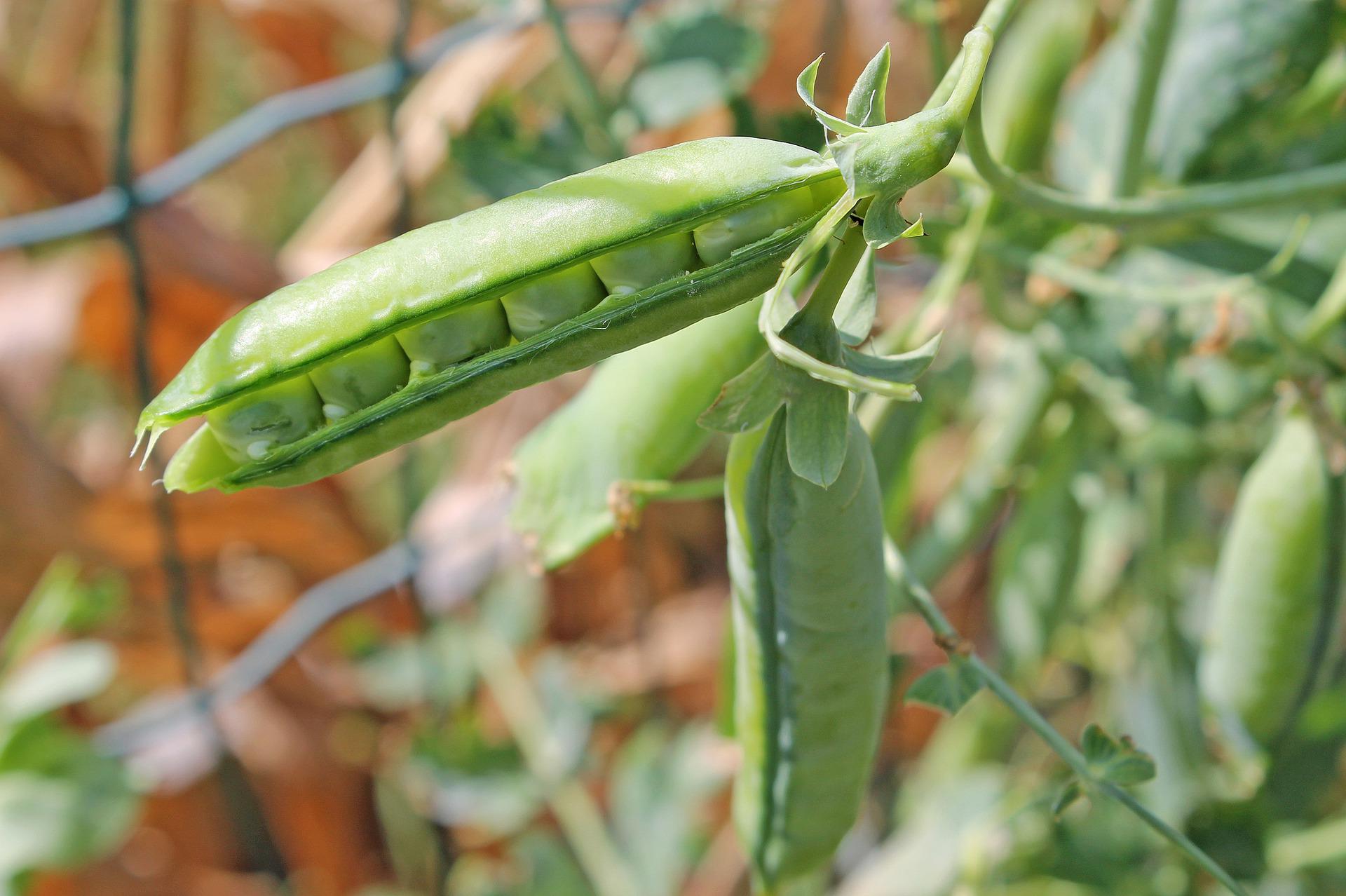In regions with rainy springs and soils that have good water and air capacity, peas are usually grown without irrigation, especially during early spring sowing when the crop benefits from conserved winter moisture in the soil.
Even with winter moisture, early cultivars on very light, sandy soils may require 2 – 3 irrigations to ensure adequate yield. For peas sown later in the season, irrigation is necessary because drought during flowering and immediately afterward can significantly reduce yield.
Peas respond best to a consistent water supply, maintaining soil moisture at 60 – 70% of the field’s water-holding capacity. The amount of water applied and the timing of irrigation are crucial for effective water management.
Key Elements in Irrigation Management:
- Irrigation Amount: This refers to the quantity of water added during an irrigation event (measured in m3/ha or mm). The goal is to moisten the soil up to the field capacity, depending on the soil type. Determining the irrigation amount requires knowledge of soil moisture levels before irrigation and the soil’s water-holding properties. The difference between the field capacity and the current soil moisture content determines the irrigation amount.
- Timing of Irrigation: This refers to the precise timing for applying irrigation water, which is critical for successful and efficient irrigation. If irrigation timing is determined “by eye,” it can lead to inefficient water use and potentially harm the crop.
To ensure optimal timing and determine the irrigation amount, using soil moisture meters is recommended.
Sprinkler Irrigation
Advantages of Sprinkler Irrigation:
- Can be used in various topographic conditions.
- Requires minimal or no soil preparation.
- Does not occupy cultivable land.
- Does not reduce the use of machinery.
- Enables efficient use of available water through precise dosing.
- Reduces the risk of soil structural degradation.
- Allows irrigation of newly sown fields and young crops and the possibility of fertigation (applying fertilizers through irrigation).
In sprinkler irrigation systems, water is drawn from a source, pressurized through pipes, and distributed over the field in the form of droplets, mimicking natural rainfall.
Types of Sprinkler Irrigation Systems:
- Portable: All components are movable, and pipes are connected with quick-connect couplings.
- Semi-stable: Has a fixed water intake and main pipeline, while the sprinkler wings and nozzles are portable. The main pipeline is usually buried, with hydrants at the surface for connecting the sprinkler wings.
- Stable: All components are fixed, with nozzles connected to a permanently installed pipe network, typically underground.
Each sprinkler irrigation system consists of a water intake, a pipe network, sprinklers, and fittings. The water intake can be gravitational or involve a pumping unit. The pumping unit typically includes a motor and a pump, with centrifugal pumps being the most common. It’s essential to match the pump’s power with the system’s requirements.
The pipe network delivers water from the source to the sprinklers and includes the intake pipe, main pipeline, and sprinkler wings. The sprinkler wings have outlets spaced at intervals for connecting sprinklers.
Sprinklers play a crucial role in distributing water evenly across the field. They vary in water pressure, spray radius, water output, coverage area, intensity, type and number of nozzles, and method of operation.
Proper selection and placement of sprinklers are crucial for even water distribution, as wind can disrupt ideal watering patterns. Generally, the most water is applied near the sprinkler, decreasing toward the edges. Therefore, sprinklers should be positioned to ensure uniform coverage across the field.
Furrow Irrigation
This older method involves creating furrows for water distribution. The system includes supply channels, distribution channels, furrows, and portable dams. Distribution furrows can be replaced with plastic, rubber, or metal pipes to transfer water from the distribution channel to the furrows.
Upgrading the system can involve using portable pipelines, replacing supply and distribution channels with pipes. These pipes are lightweight for easy transport, typically 15 cm in diameter, with adjustable outlets to control water flow into the furrows.
The furrow spacing for vegetable crops is usually 50 – 100 cm. This method requires relatively flat terrain with a uniform slope, ideally 2 – 4%.
Furrow depth is typically 15 – 25 cm. The irrigation amount depends on soil type, crop, and current soil moisture levels. This method maintains soil structure and reduces crust formation, using less water, which is why it has been a long-standing practice.
Localized Drip Irrigation
This method allows for irrigation at any time of day without causing shock from applying cold water to hot plant parts. By avoiding wetting the foliage, it also reduces the risk of fungal diseases. The system operates under low pressure, minimizing the impact on soil structure, which is favorable for crop growth, and reduces energy consumption.
Localized water delivery reduces the irrigated area, minimizing water loss through evaporation or runoff. The ability to apply liquid fertilizers (fertigation) simultaneously with irrigation is another advantage of drip irrigation.
A significant issue with drip irrigation is clogging, which can be mechanical or chemical. Clogging is directly related to water quality, including its physical, chemical, and microbiological properties. Filters can prevent mechanical clogging, while chemical clogging results from the formation of insoluble salts in or on the emitters.
A drip irrigation system consists of a head unit, filtration unit, main pipeline, laterals or distribution pipes, and emitters. The emitter reduces water pressure from the pipe and releases water in droplets onto or into the soil.
There are two types of drip irrigation systems: surface and subsurface. In surface irrigation, pipes and emitters are placed above or on the soil surface, while in subsurface irrigation, they are buried in the soil.













































